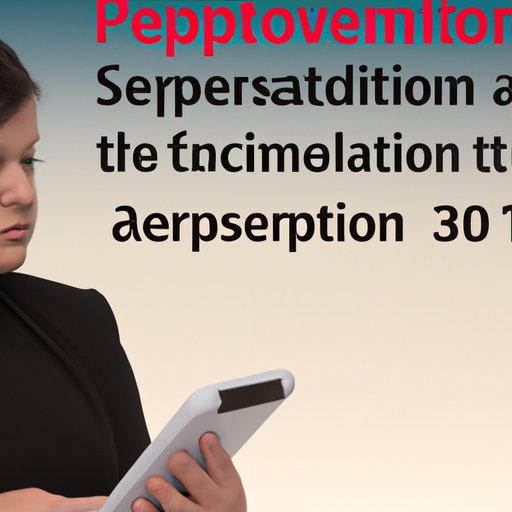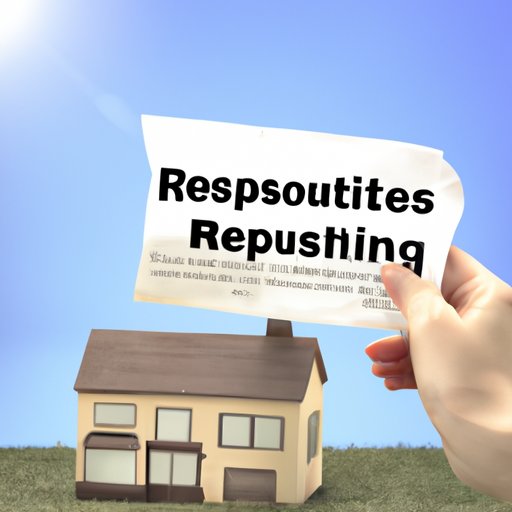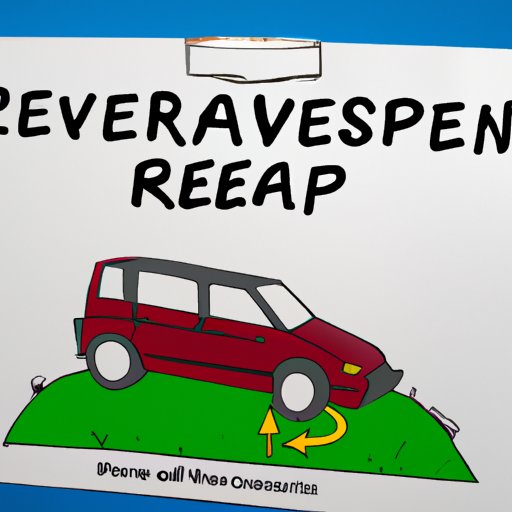Introduction
Repossession is a process in which a lender will take back property that was used to secure a loan. In most cases, this refers to a vehicle, but it can apply to other types of collateral as well. When someone fails to make payments on their loan, the lender can start the process of repossessing the vehicle. This can be a stressful situation for borrowers, so it is important to understand the process and your rights.

Overview of Repossession Process: Explaining the Steps Involved
The first step in the repossession process is when the lender sends notices to the borrower. These notices are meant to warn the borrower that they are in default on their loan and that the lender may take action if the loan is not brought up to date. Depending on the state, the lender may be required to provide a certain amount of notice before taking further action.
Once the notices have been sent, the lender can then take possession of the vehicle. This is done by a third party, such as a tow truck company, who will pick up the vehicle and return it to the lender. The borrower may be charged a fee for this service.
Once the vehicle has been repossessed, the lender can then sell it in order to recoup the money that was borrowed. This sale can be open to the public or it can be done privately. The proceeds from the sale are then used to pay off the loan, with any remaining funds going to the borrower.

Understanding Your Rights During the Repossession Process
When it comes to repossession, borrowers do have some rights. One of these rights is the right to notice. Most states require lenders to provide a certain amount of notice before taking action. This gives borrowers time to try to work out an arrangement or find another solution before the vehicle is taken away.
Borrowers also have the right to reclaim their property. If the loan is brought current and all fees are paid, the borrower can reclaim their vehicle from the lender. However, they may still be responsible for any costs associated with the repossession process.
Finally, borrowers have the right to a deficiency judgment. This is a court ruling that states how much the borrower still owes after the sale of the repossessed vehicle. The lender must then seek payment from the borrower, although this can be difficult to enforce.

How to Avoid Car Repossession
If you are facing the possibility of repossession, there are some steps you can take to try to avoid it. The first is to negotiate with your lender. You may be able to work out a payment plan or other arrangement that allows you to keep your vehicle and stay current on your loan.
Another option is to refinance or modify your loan. This involves changing the terms of the loan, such as the interest rate or length of the loan, in order to make it more manageable. This can help reduce your monthly payments and make it easier to keep up with your loan.
Finally, you can consider selling the vehicle. This can be a difficult decision, but it may be the best option if you cannot keep up with the payments. You can use the proceeds from the sale to pay off the loan and use any remaining funds to get a different vehicle or pay off other debts.
Exploring Alternatives to Car Repossession
In some cases, repossession may be unavoidable. If this is the case, there are some alternatives to consider. One option is voluntary surrender. This involves returning the vehicle to the lender without having it repossessed. This can save the borrower money in repossession fees and can also help reduce the damage to their credit.
Another option is bankruptcy. This can stop the repossession process and give the borrower time to reorganize their finances. However, it is important to note that bankruptcy stays on your credit report for up to 10 years and can make it difficult to obtain loans in the future.
Finally, you can consider getting a car title loan. This is a short-term loan that uses the value of your vehicle as collateral. It can be a good option for those who need a quick influx of cash, but it is important to remember that the loan must be repaid and failure to do so could result in repossession.
Impacts of Car Repossession on Credit Scores
When a vehicle is repossessed, it can have a significant impact on your credit score. This is because the repossession is reported to the credit bureaus and can remain on your report for up to seven years. This can make it difficult to get a loan or even rent an apartment in the future.
However, it is possible to recover from a repossession. You can do this by making sure your other accounts are up to date and by paying down your debt. You should also consider applying for a secured credit card, which can help rebuild your credit over time.
Conclusion
Repossession is a process in which a lender takes back property that was used to secure a loan. It is important to understand the steps involved in the process and your rights as a borrower. There are also ways to avoid repossession, such as negotiating with your lender or refinancing your loan. Finally, repossession can have a negative impact on your credit score, so it is important to take steps to rebuild your credit if it is affected.
(Note: Is this article not meeting your expectations? Do you have knowledge or insights to share? Unlock new opportunities and expand your reach by joining our authors team. Click Registration to join us and share your expertise with our readers.)
